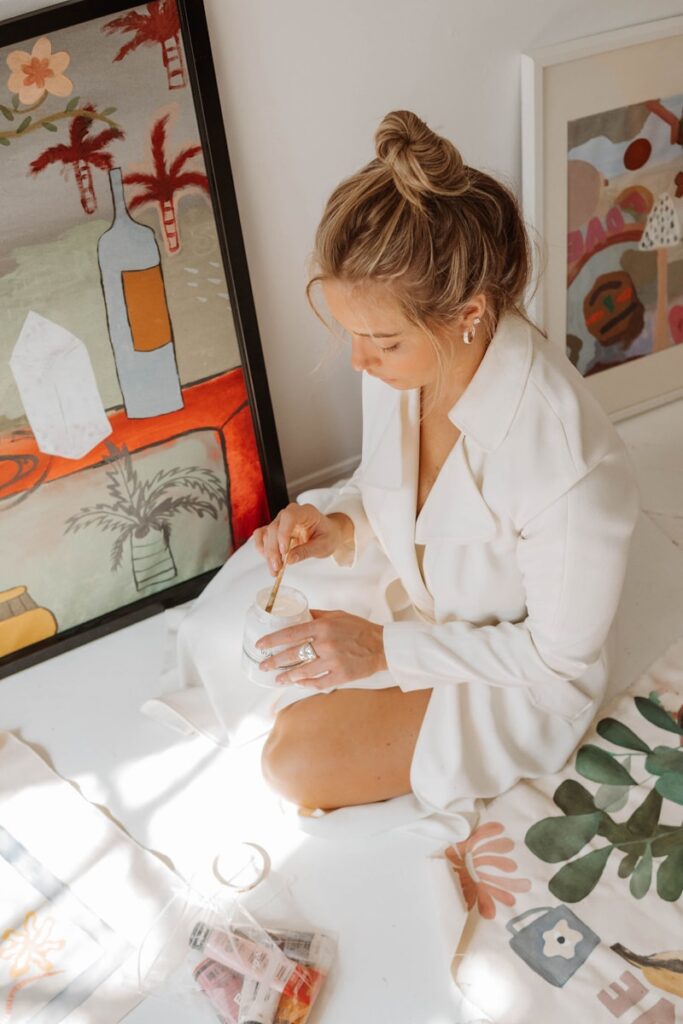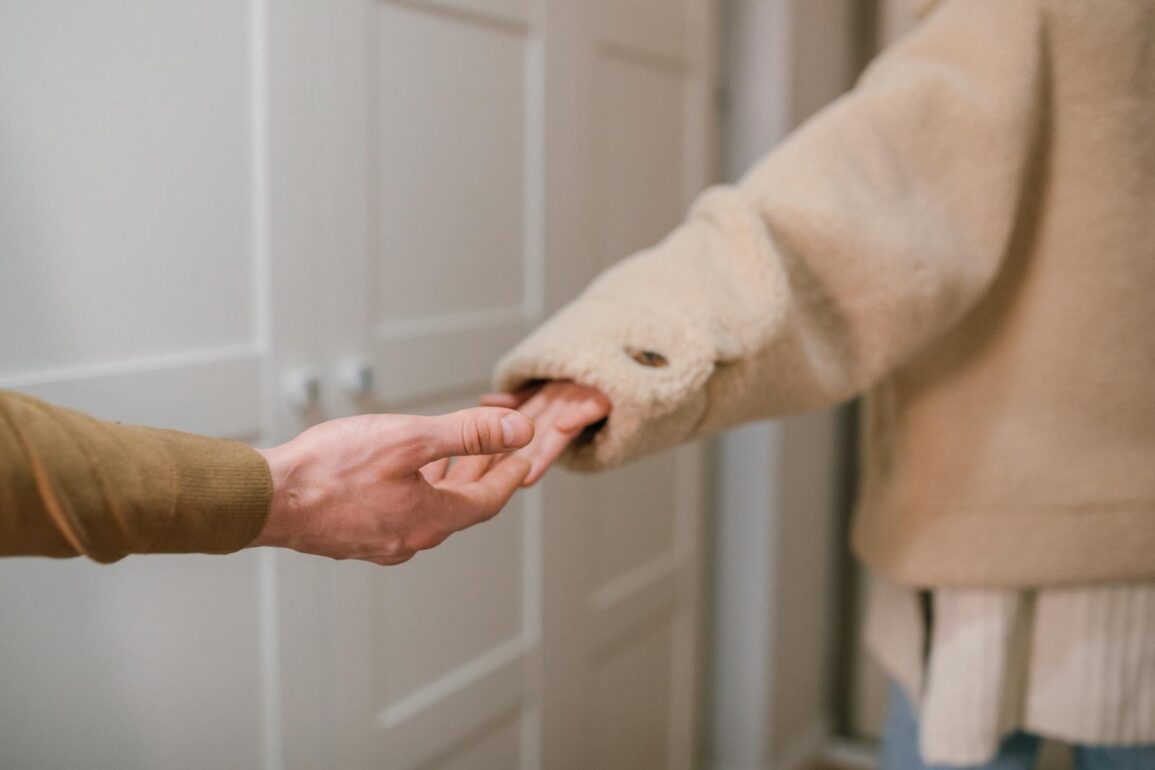Letting go of someone you love can feel like climbing Everest in flip-flops—impossible and a bit ridiculous.
I’ve been there, stuck between holding on and moving forward.
Over time, I’ve discovered some unconventional steps that genuinely help.
With insights from senior relationship coach Antonija Bosanac, we’re about to explore fresh ways to navigate this tough journey together.
Let’s get straight to the point.
And, if you wish to learn more about the different stages of a break up, read more on how to deal with them.
Useful:
- All you think about is him, but he only thinks about himself? Watch this free video tutorial
- Couples, Dating and Breakup coaching done online. Talk to a coach from a trusted certified coach’s network and finally achieve your relationship goals. Take a quiz, get matched, and start getting support via phone of video sessions. Affordable pricing + VIP $50 off for our readers.
Find a Coach Now
1. Embrace the Void – Making Friends with Loneliness
When my long-term relationship ended, I did everything to avoid being alone.
I filled my schedule with coffee dates, movie marathons, even took up knitting (let’s just say the scarf didn’t turn out as planned).
But Antonija offers a different perspective on how to let go of someone that you love.
“When you sit with your loneliness, you begin to see it not as a pitfall but as a space for self-discovery.”
Confronting solitude head-on without distractions might sound terrifying.
Many believe filling the void is the solution, but sometimes that’s just putting a bandage on a deeper wound.
Embracing the emptiness can lead to profound insights about yourself.
I remember spending an evening watching the sunset from my rooftop.
No phone calls, no background music—just me and the sky changing colors.
It was oddly comforting.
Some folks think this approach is bonkers.
They’d rather dive into a rebound relationship or surround themselves with a crowd.
But facing loneliness can be a game-changer.
It helps you process difficult emotions and build a healthier relationship with yourself.
Tip: Spend a little extra time each day in quiet reflection—no gadgets, just you.
2. Detox Your Digital Life – A Tech Cleanse for the Heart
After my breakup, my cell phone felt like a box of emotional landmines.
Every ping made my heart skip, and not in a good way.
Antonija advises creating a clutter-free digital environment devoid of triggers.
“Digital ties can be as binding as physical ones,” she notes.
“A tech cleanse helps break those unseen chains.”
I hesitated at first.
Wasn’t deleting photos and messages a bit extreme?
But then I realized holding onto them was like keeping the bandage on a healed wound—unnecessary and a bit gross.
So, I took the plunge.
I deleted old conversations, removed our pictures, and unfollowed him on social media.
This move divides opinions.
Some see it as running away; others view it as necessary healing.
Mutual friends might raise an eyebrow, but focusing on your mental health is what’s important.
“It’s not about being spiteful,” Antonija explains.
“It’s about giving yourself the space to heal without constant reminders.”
Creating digital distance allowed me to focus on supportive friends and activities that brought me joy.
Instead of scrolling through old messages, I found myself having actual phone calls with friends I hadn’t spoken to in ages.
Tip: Try a weekend without social media to see how it affects your mood and healing process.
3. Flip the Script – Turn Pain into Creative Fuel

Channel your emotions into art, writing, or a new project.
Heartbreak brings strong emotions that can feel overwhelming.
But what if you could turn those difficult feelings into something beautiful?
“When my long-term relationship ended, I picked up painting again. I hadn’t touched a brush in years. It became my therapy, transforming anguish into art.”
Antonija shares.
When I was figuring out how to let go of someone that you love, I had extra time on my hands, so I started exploring hobbies I’d neglected during my romantic relationship.
I tried cooking new recipes from different cultures.
It became a fun way to explore and kept my mind engaged.
Plus, my supportive friends appreciated the extra food!
Some people worry this might keep you dwelling on the past.
But creativity can be a way to move forward.
It taps into your natural strengths and reveals character strengths you didn’t know you had.
Remember when Adele released her album after her breakup?
She turned her pain into music that resonated with millions.
You don’t have to be a superstar; even small creative acts can make a difference.
Whether it’s gardening, writing, or trying out that pottery class again (maybe with better results this time), turning pain into creativity can be transformative.
Tip: Choose a creative activity that excites you and dive in, even if you’re a beginner.
Related:
How to break up with someone (and get the courage): 9 no regret steps to keep fear at bay
Fear of Being Alone: Don’t Let A Break-Up Stop You, Here’s Why
4. Travel Solo – Rediscover Yourself in Unfamiliar Places
Embark on a journey with just you and your thoughts.
After my last relationship ended, I booked a solo trip to New Orleans.
Navigating new environments alone felt daunting, but it also built confidence I didn’t know I had.
Wandering through the French Quarter, listening to jazz, and trying beignets at Café du Monde became a healing process.
When I share this with Antonija, she smiles.
“Traveling alone was the greatest gift I gave myself—it taught me who I am without anyone else’s influence.”
She often recommends solo journeys to her clients, whether it’s a weekend getaway or a month-long adventure.
Some people fear solitude, thinking it’ll amplify their loneliness.
Others, like us, find it liberating.
You get to set your own schedule, prioritize your own interests, and maybe even discover new character strengths along the way.
I met a woman named Lisa on a train to Chicago.
She was embracing solo travel after a decades-long marriage ended.
“It’s scary but empowering,” she told me.
“I’m learning to enjoy my own company.”
Traveling solo isn’t about running away from your problems.
Instead, it’s about embracing life’s reality and giving yourself the extra time to heal.
Tip: Start with a short trip to a place you’ve always wanted to visit to ease into solo travel.
5. The Mirror Challenge – Daily Affirmations of Self-Worth
Stand before the mirror and speak kindness into your reflection.
I’ll admit, the first time I tried the mirror challenge, I felt ridiculous.
Telling myself “You are worthy of love” while staring into my own eyes seemed awkward.
But Antonija encourages this practice.
“At first, it feels strange, but affirmations rewire your brain to recognize your own value.”
Overcoming discomfort to build self-love isn’t easy.
Yet, this simple daily ritual can shift negative emotions into positive ones.
Some people think it’s silly; others find it empowering.
Clinical psychologists agree that affirmations can improve mental health and promote a healthier relationship with oneself.
I remember a client named Mike who struggled with self-esteem after an unfulfilling relationship.
After a few weeks of daily affirmations, he began to notice a change.
“I don’t cringe at my reflection anymore,” he shared.
“I see someone deserving of happiness.”
Transitioning from self-criticism to self-compassion takes time.
But standing before the mirror each day can be a powerful step in your healing journey.
Tip: Choose three affirmations that resonate with you and repeat them every morning for a confidence boost.
Related: 10 unlikely signs a couple will breakup from a relationship coach
6. Rewrite the Ending – Closure Through Storytelling
After my unfulfilling relationship ended, I found myself replaying every moment like a movie I couldn’t turn off.
One day, over coffee, Antonija suggests,
“Why not write your own ending?”
She believes that by rewriting the story, we gain control by reframing the narrative.
I decided to give it a shot.
I sat down with a journal and penned a new conclusion to my romantic relationship.
Instead of the usual sad ending, I imagined a scene where we parted with mutual respect and gratitude for the happy times.
It felt strange at first, but then a sense of relief washed over me.
Antonija tells me, “By rewriting the ending, you take back authorship of your life’s story.”
Some people prefer to forget, but processing these difficult emotions can be healing.
It’s like giving yourself permission to close that chapter and look forward to future relationships.
A friend of mine, Jake, tried this after his decades-long marriage ended.
He said it helped him let go of negative feelings and see the entire relationship in a new light.
Transitioning from pain to acceptance is a powerful step when learning how to let go of someone that you love.
Tip: Grab a notebook and write a new ending to your story—it might bring unexpected closure.
7. Invest in New Relationships – Not Romantic Ones
Focus on building friendships and community ties.
After a breakup, it’s tempting to jump into a rebound relationship.
But instead, I chose to invest in my platonic relationships.
I joined a local book club and reconnected with old school friends.
This expanded my support network and brought a sense of belonging I hadn’t felt in a while.
“Love comes in many forms. Nurturing platonic relationships heals the heart in unexpected ways.”
She often sees clients who, after focusing on friendships over time, find their mental health improving.
Some worry about the risk of new dependencies.
But building healthy relationships with supportive friends can be a cornerstone in your healing journey.
It shifts your priorities from people who bring you down to those who lift you up.
I even volunteered at a community garden, which not only filled my extra time but also connected me with like-minded folks.
Engaging with others helped me recognize my natural strengths and character strengths I didn’t know I had.
Tip: Reach out to friends or join a community group to build meaningful connections.
Conclusion
Letting go someone that you love isn’t about erasing memories or forcing yourself to forget.
It’s a transformative journey inward, one that challenges and ultimately changes you.
These steps push beyond the ordinary, offering fresh pathways to healing.
As Antonija wisely says, “Letting go feels impossible until you take the first step.
Trust the process, and you’ll find freedom on the other side.”
I hope these insights resonate with you.
Remember, you’re not alone on this path.
Feel free to share your experiences or thoughts—let’s continue this conversation together.




